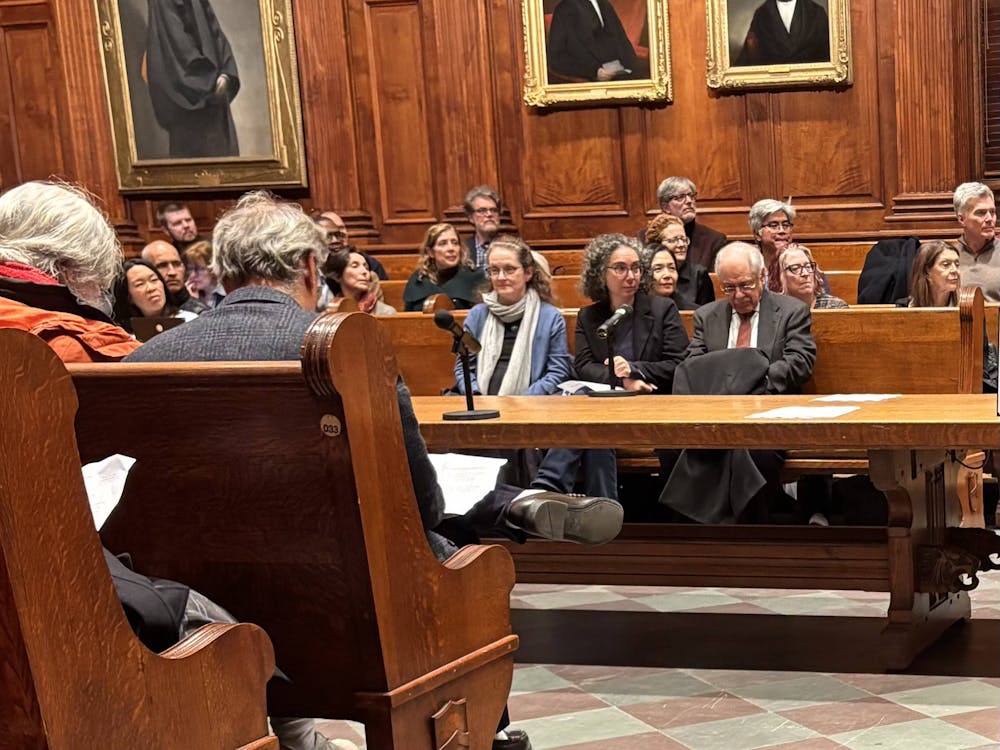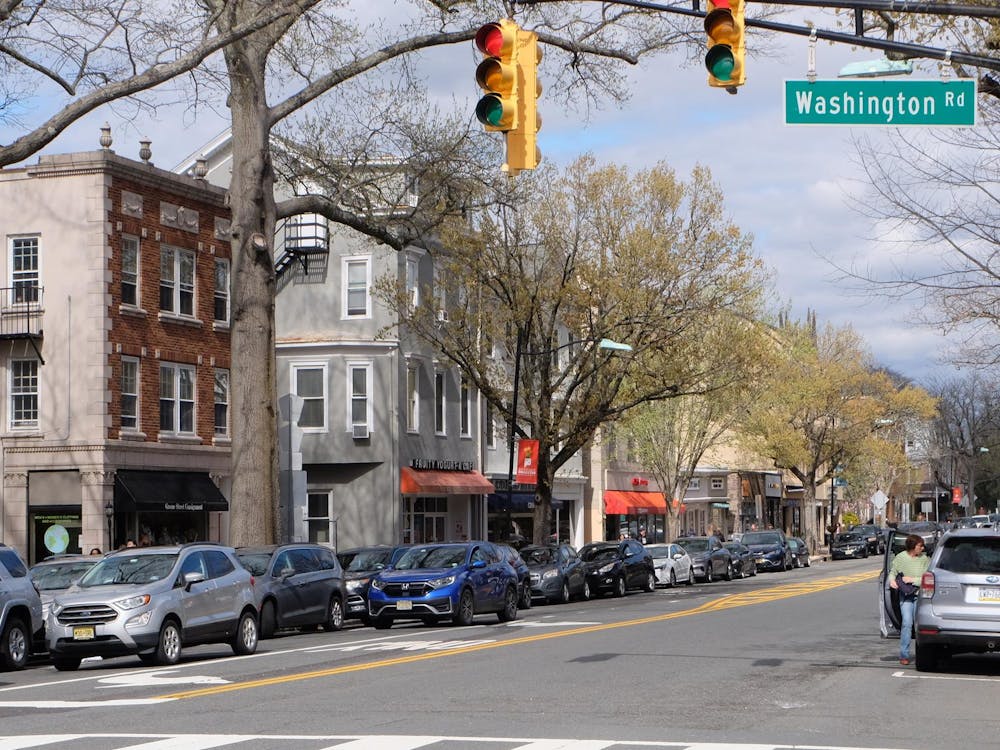Responding to the leader's rousing cry of "Is that clear, men?" a massed group of close-ranked infantry took Poe Field by storm yesterday afternoon to the sounds of clashing weaponry and shouts of excitement. The infantry was preparing for an hour of formation training followed by several small-sided clashes.
The militant group of undergraduates, graduate students and professors gathered to participate in the mock phalanx battle, which was organized by classics professor John Ma for his CLA 326/HIS 326: Topics in Ancient History: Warfare in the Ancient Greek World.
The event drew about 30 participants and a small crowd of sideline spectators, prudently watching from beyond the range of the stone throwers.
"The idea is to re-enact the classic Greek battle formation called a phalanx, which was made up of heavily armed infantry men holding shields and spears," explained classics department graduate student Jamie Woolard before the armed exercises began. "Picture a rugby match. Pretty much the two opposing sides would just crash up against each other and whichever side could break through first would win."
After attempting several of the easier formations — including marching shoulder-to-shoulder, breaking into a run on cue, positioning shields properly, as well as shouting a Greek battle cry — the group was ready to face its first foes.
Ma recruited some "enemy rock and javelin throwers" to test the phalanx. Standing at a distance of about 20 feet, these "barbarians" threw several small pebbles at the infantry huddled beneath its shields.
After several moments, a small group from the front, called the "ekdromos," separated itself from the main force and made a charge. Ma explained, "[The ekdromos] would wait for the other side to get too confident, then strike. It was a very dangerous move."
Eric Sell '02 said he was surprised at the battle's intensity. "You could see the blood-lust in their eyes," he said.
Andrew Novo '03 added, "There was definitely that moment when reality got a little blurred. That was very interesting."
Ma first revived the mock battle two years ago, using an idea developed by former University professor W.R. Connor.
Participants were provided with shower-curtain rods as spears, but had to furnish their own shields, made of plastic sleds with original designs painted on them.
Ma said he staged the battle to help his students better understand the particulars of how Greeks used their weapons and engaged in battle.

And Woolard said the battle taught students things they could not learn from textbooks alone.
"How did they hold their spears? How close together were the formations?" he asked. "Without testing these ideas out for ourselves, how could we know if our battle-formation assumptions are even physically possible?"
A few of the student participants came to their own conclusions about the Greek phalanx formation by the end of the afternoon.
"There was a lot of pushing when the two sides met. With the pressure from behind, you couldn't stop yourself from moving forward," Jeff Crean '01 said. "Today was helpful to get a limited but valuable idea of what is rationally and humanly possible."
Peter Lee '03 said the experience demonstrated to him that being part of a phalanx is no easy task. "To me it proves how disciplined the Greek troops had to have been," he said. "It was a struggle to maintain formation, and there were only 30 of us."
Ma offered his own summation of the afternoon's exercises. "Just remember that Greek history is all about the bodies," he said.







